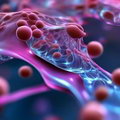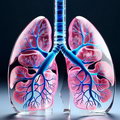
Diabetic foot ulcers are a common and serious complication of diabetes. They occur due to poor circulation, nerve damage and a weakened immune system. Diabetic foot ulcers are a common and debilitating complication of diabetes, affecting millions of people worldwide. These ulcers, which usually occur on the sole of the foot, heal slowly and often lead to serious complications, including infection and amputation.
Diabetic foot ulcers impact a huge number of people with diabetes: it is estimated that about 15% of people with diabetes will develop a foot ulcer at some point in their lives. These ulcers not only cause discomfort and pain, but can also lead to serious complications such as infections and even amputations.
Traditional treatment approaches for diabetic foot ulcers often involve wound care, infection management, and offloading techniques (reducing pressure on the ulcer). This usually involves regular wound cleaning, removal of dead tissue, and the use of antibiotics to treat infections. Offloading techniques, such as the use of special shoes or orthotic devices, help reduce pressure on the ulcer, which speeds the healing process.
Regenerative medicine has emerged as a promising alternative for diabetic foot treatment by harnessing the body's natural healing capabilities. Treatment involves the use of biological materials, cells, or other substances to stimulate tissue regeneration and promote wound healing.
Regenerative agents contain growth factors and other bioactive molecules that promote tissue repair and wound healing. They are injected into a diabetic foot ulcer to stimulate the healing process.
A common feature of diabetic ulcers is inflammation. Regenerative therapies can help modulate the inflammatory response, reduce inflammation, and promote a more favorable healing environment. Poor blood circulation is a major factor in diabetic ulcers. Regenerative therapy can enhance angiogenesis (formation of new blood vessels), improve blood flow to the ulcer site, and promote tissue regeneration.
Diabetic ulcers are prone to infections, which delay healing and cause serious complications. Regenerative therapy enhances the immune response and provides antimicrobial properties, thus reducing the risk of infections. One of the major advantages of regenerative medicine is its potential to promote long-term healing and reduce ulcer recurrence. By addressing the underlying factors that contribute to diabetic foot ulcers, regenerative therapies can help prevent future complications.
Diabetic foot ulcers, as well as ulcers caused by other factors or ischemia, decreased blood circulation in the extremities and the development of gangrene, are no longer a death sentence for the patient. It is possible to save the leg from amputation and thereby preserve the quality of life and life itself. Future developments in advanced cell-based therapies, combination treatments, and personalized medicine approaches offer hope for improving outcomes and making stem cell therapy more accessible to those in need.















